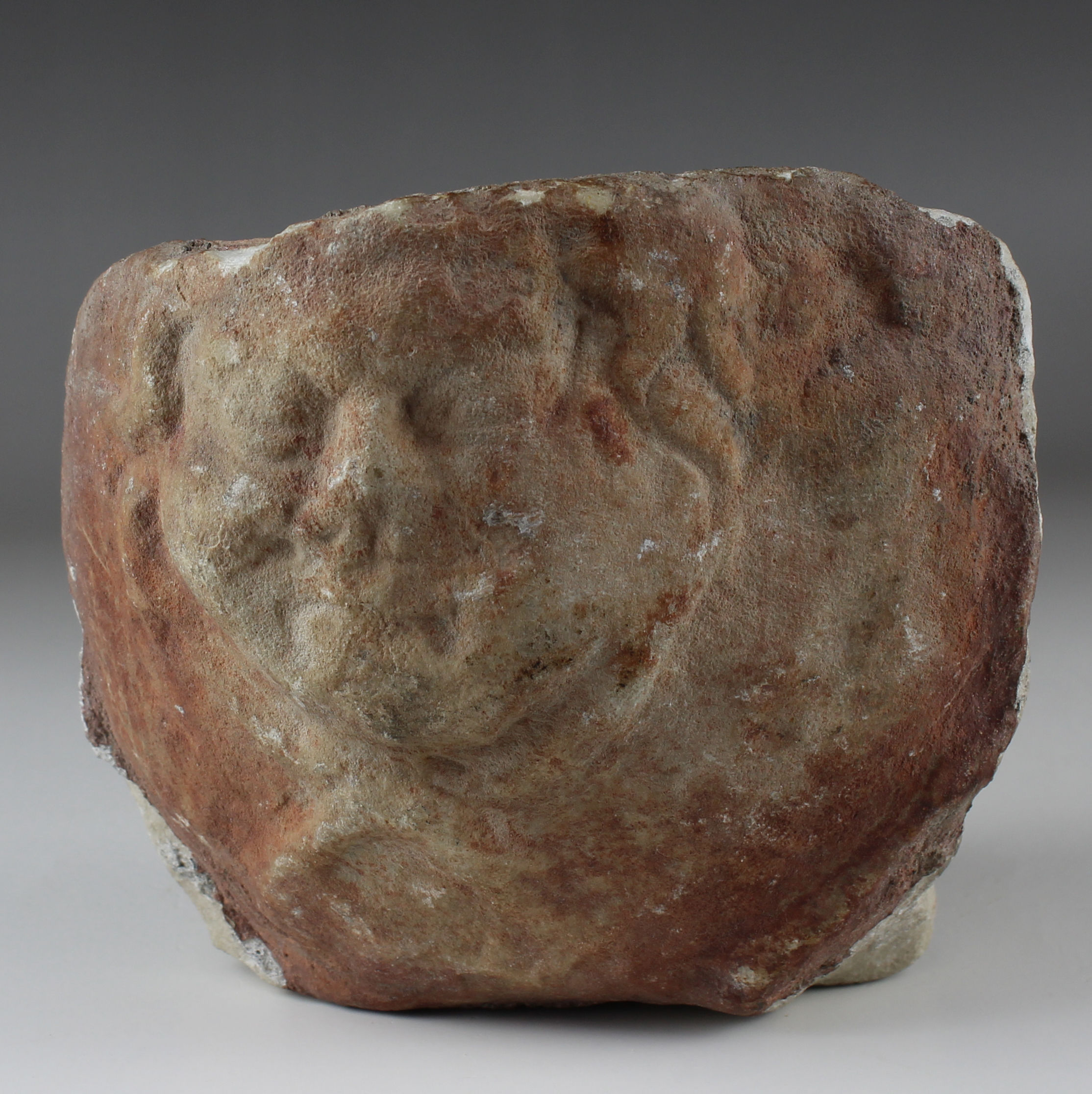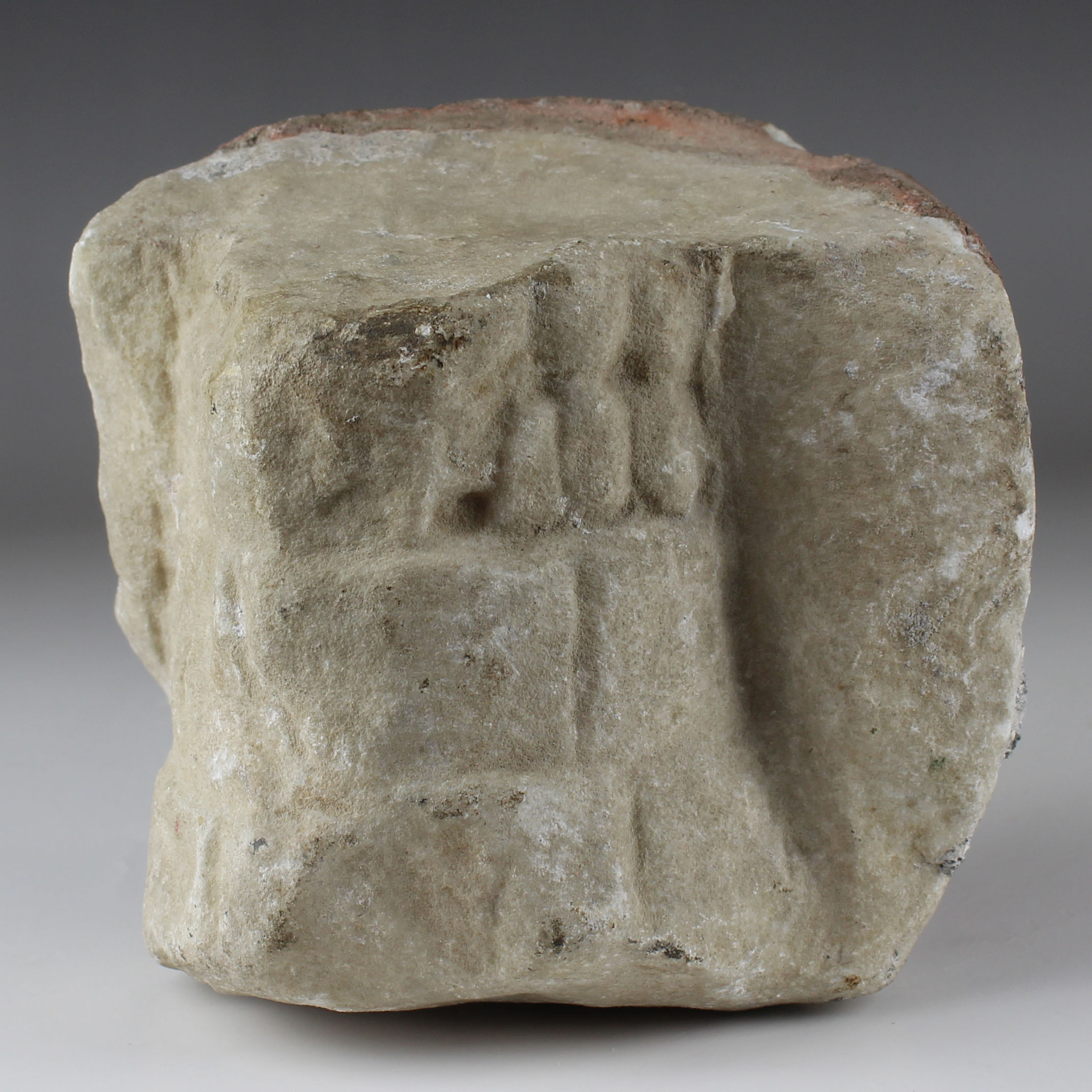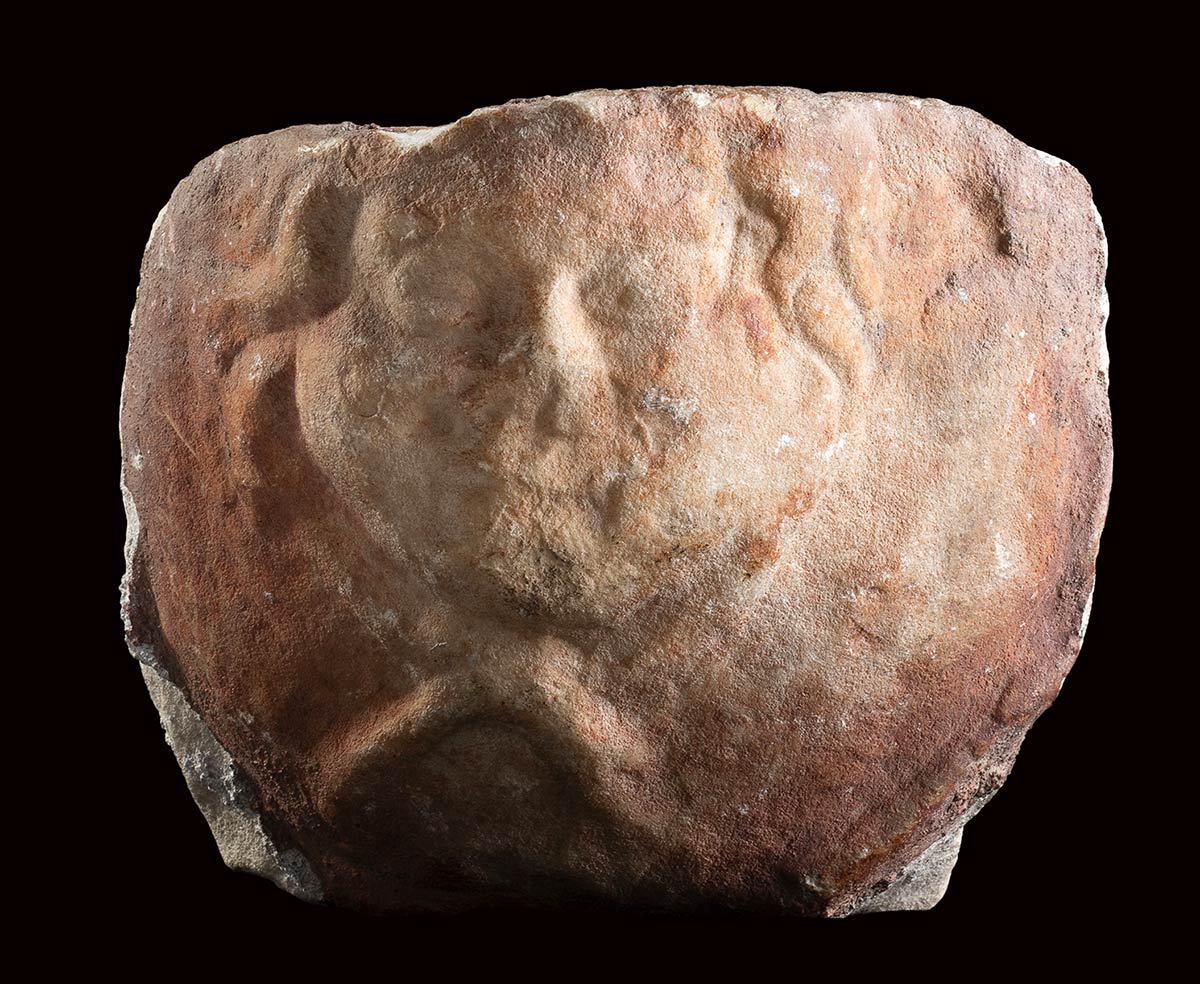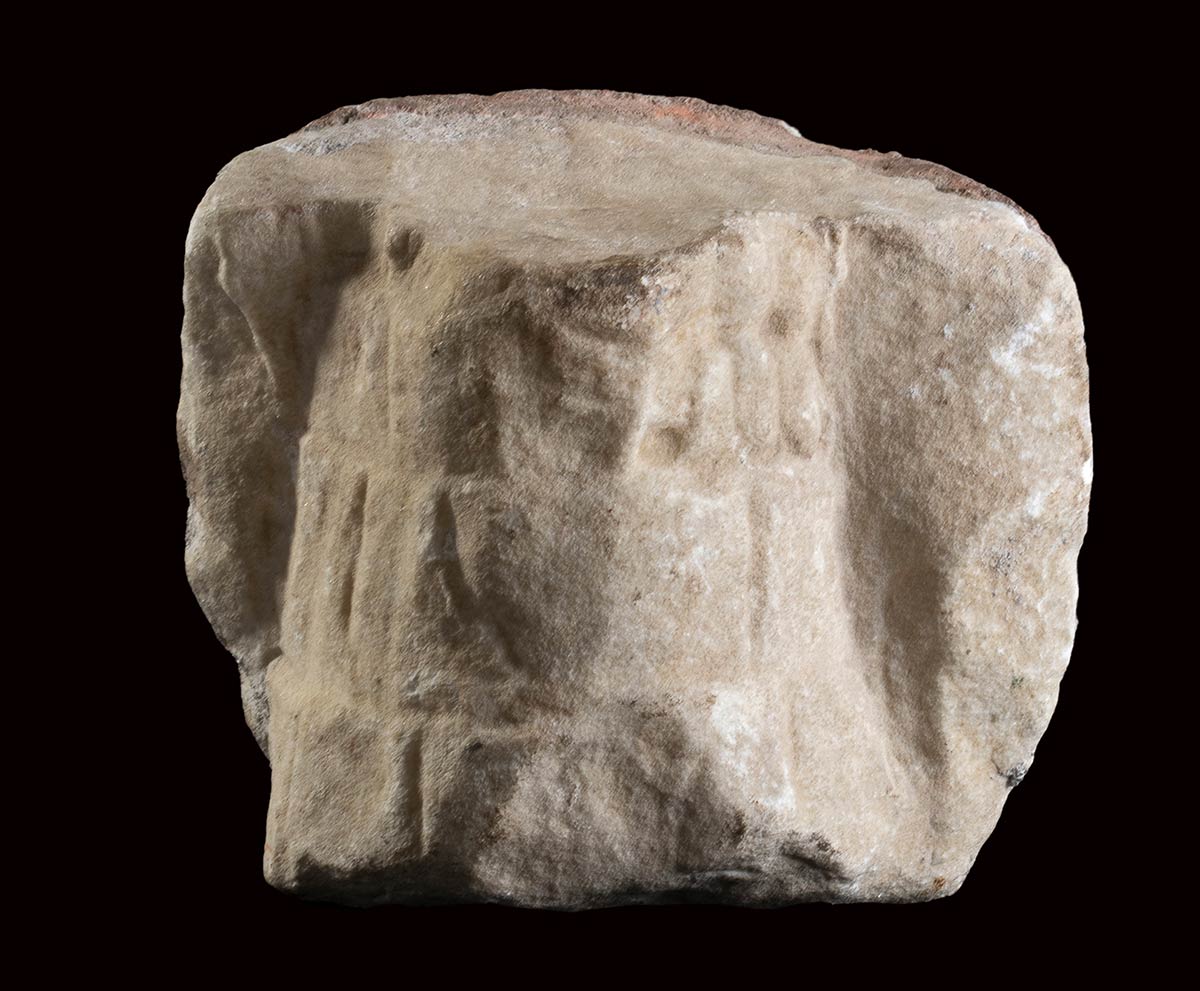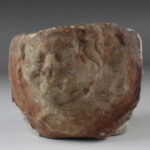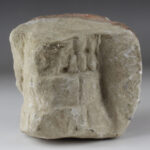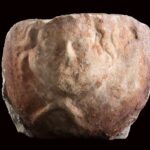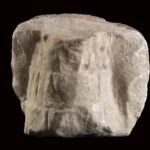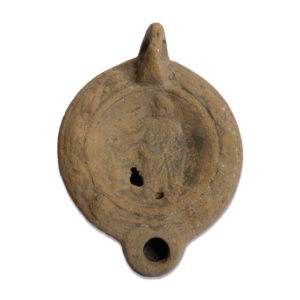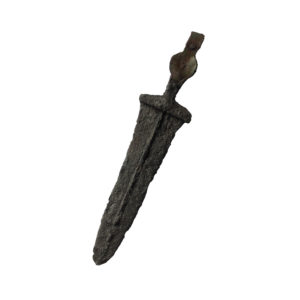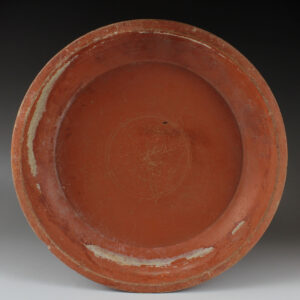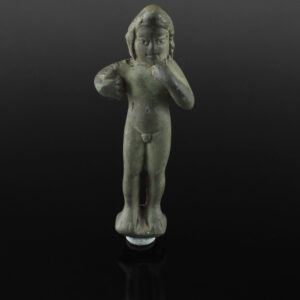Description
| ITEM | Fragment of cuirass (Lorica musculata) with Gorgon |
| MATERIAL | Marble |
| CULTURE | Roman |
| PERIOD | 1st – 3rd Century A.D |
| DIMENSIONS | 110 mm x 130 mm x 83 mm |
| CONDITION | Good condition |
| PROVENANCE | Ex Collection of a Belgian gentlewoman, since 1960s |
A remarkable piece of Roman military equipment and artistic expression. The lorica musculata, or muscle cuirass, was a type of body armor commonly worn by Roman soldiers during the Imperial period. This particular fragment showcases the intricacies of Roman craftsmanship, with finely sculpted details that depict the muscular contours of the wearer’s torso, giving the impression of strength and power.
The inclusion of a Gorgon, a mythical creature from Greek mythology typically depicted as a fearsome female with snakes for hair, adds a distinctive touch to this fragment. The Gorgon’s presence on the cuirass served both practical and symbolic purposes. On a practical level, it may have been intended to intimidate enemies on the battlefield, invoking the Gorgon’s mythological association with petrifying gaze and supernatural powers. Symbolically, the depiction of the Gorgon could also have served as a form of protection, invoking the apotropaic properties believed to ward off evil or harm.
Furthermore, the use of marble for this fragment of the lorica musculata elevates its status from purely functional armor to a work of art. Marble was a material associated with prestige and luxury in ancient Rome, often reserved for monuments, sculptures, and architectural elements. By incorporating marble into the design of military equipment like the lorica musculata, the Romans demonstrated their appreciation for aesthetics even in the realm of warfare.


